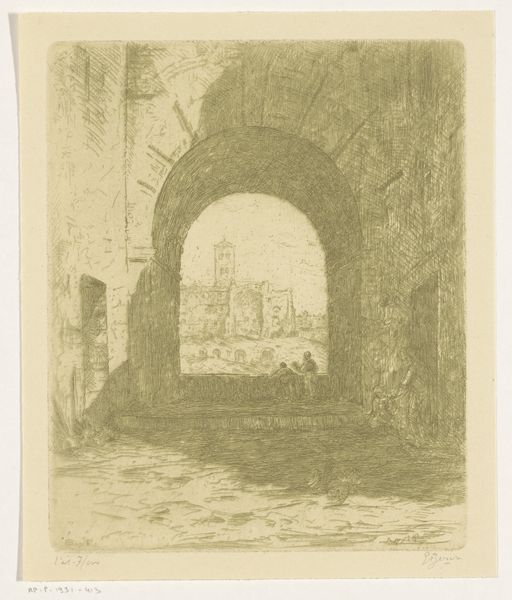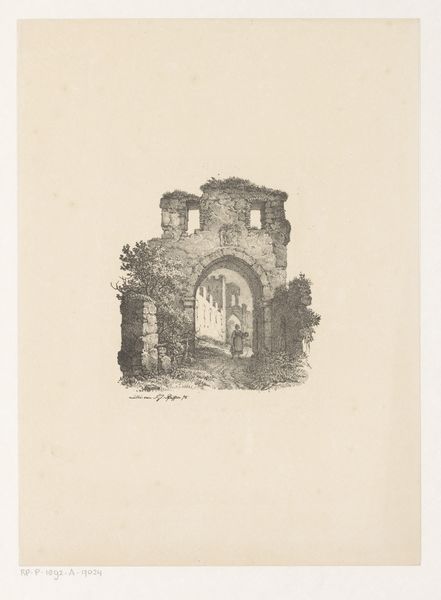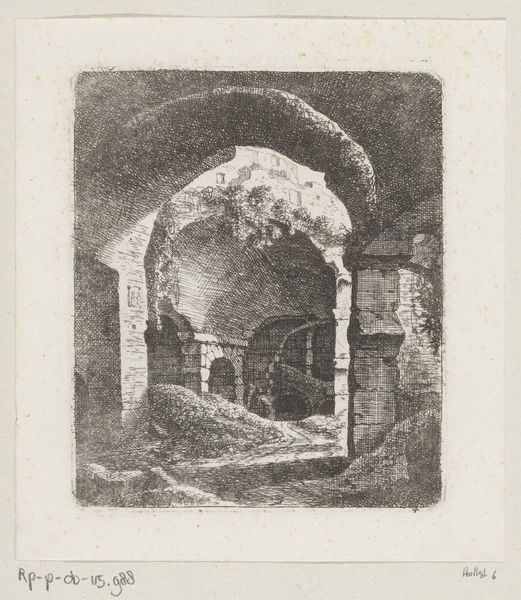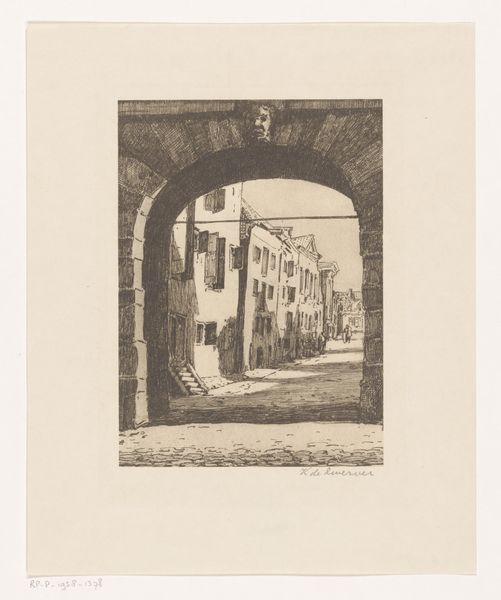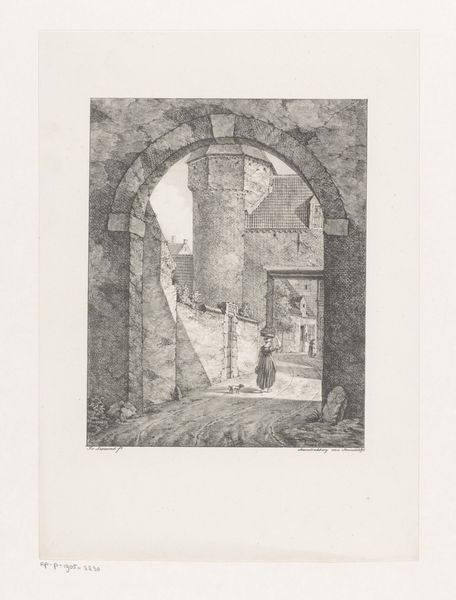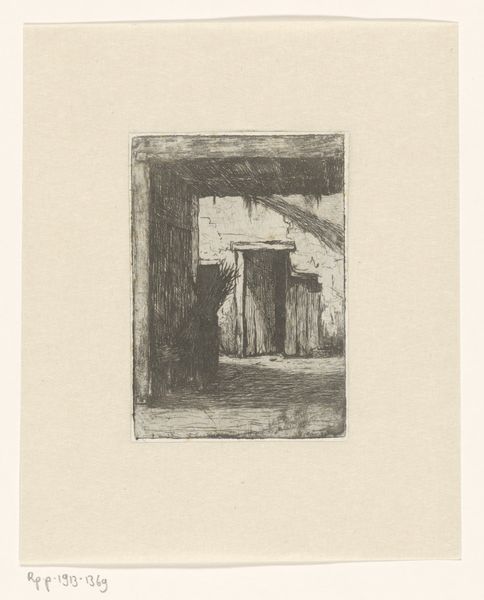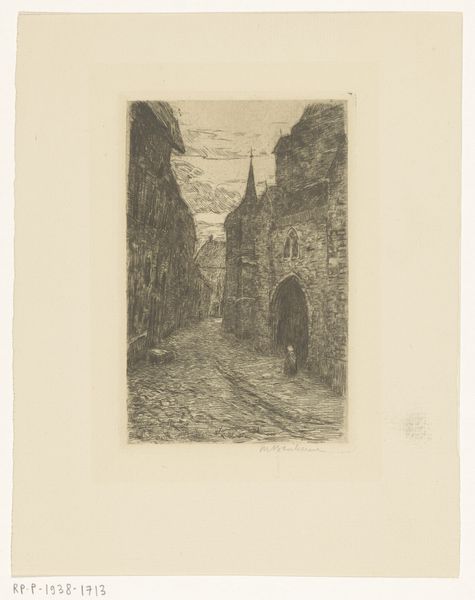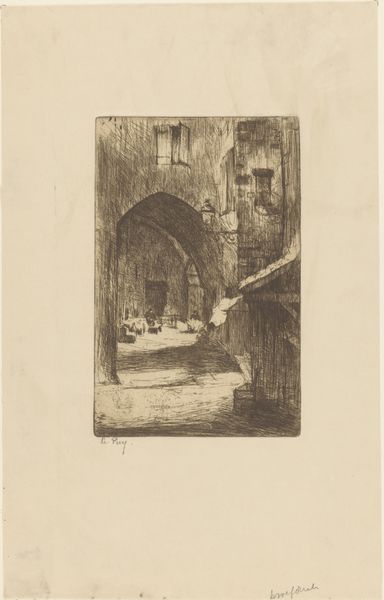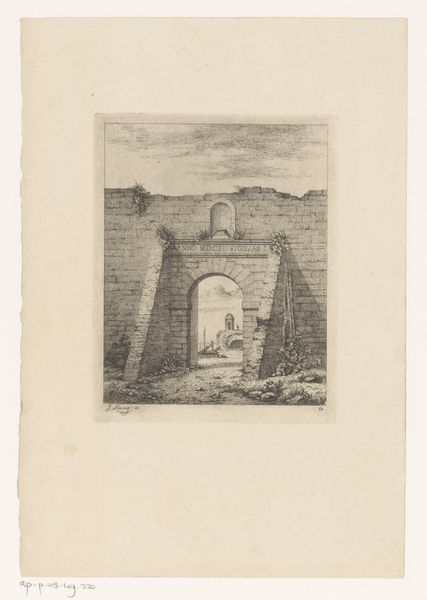
Gezicht door een poort van de ruïne van Burcht Rheinfels 1864 - 1909
0:00
0:00
corneliachristinajohannavantrigthoevenaar
Rijksmuseum
print, paper, engraving, architecture
# print
#
landscape
#
paper
#
romanesque
#
engraving
#
architecture
Dimensions: height 422 mm, width 298 mm
Copyright: Rijks Museum: Open Domain
Curator: This engraving, titled "Gezicht door een poort van de ruïne van Burcht Rheinfels," roughly translated as "View through a Gate of the Rheinfels Castle Ruins," was created by Cornelia Christina Johanna van Trigt-Hoevenaar between 1864 and 1909. Editor: It’s evocative. There's something quietly haunting in its monochrome palette and stark presentation. The arch acts as a frame, inviting the eye, guiding your gaze toward an equally eroded structure deeper within. Curator: Absolutely. Van Trigt-Hoevenaar invites us into a reflection on history, and the passage of time as revealed by the enduring symbolism of architectural remnants. Notice how the solidity of the stone contrasts against the soft, blurry backgrounds—there's a conversation about weight and absence. Editor: The material composition enhances this, too. It's all paper and ink, of course, but she uses these delicate materials to present such hulking architectural form. The engraving itself lends this incredible detail— the artist exploits chiaroscuro in interesting ways, adding both visual intrigue and a somber note. Curator: The castle ruin is presented as more than mere stones. Instead, the enduring symbol of a stronghold evokes memories of bygone power and societal evolution. Observe the way nature intertwines with the structure. Editor: This is interesting! Look at the light within the ruin. While nature appears to reclaim this edifice, it does not eclipse it. What persists from this "bygone power?" The artist’s attention is not necessarily given to what’s crumbling, but rather, what stands defiantly despite its present decay. Curator: The piece speaks, doesn't it, to the cyclical nature of civilisations, the ebb and flow of power, all represented in enduring forms? The past resonates even amidst destruction, inviting reflection. Editor: It’s definitely a thought-provoking interplay between strength and fragility. Thanks for pointing out all the cultural memories within the architectural shapes—it adds new dimensions to an otherwise haunting piece.
Comments
No comments
Be the first to comment and join the conversation on the ultimate creative platform.
